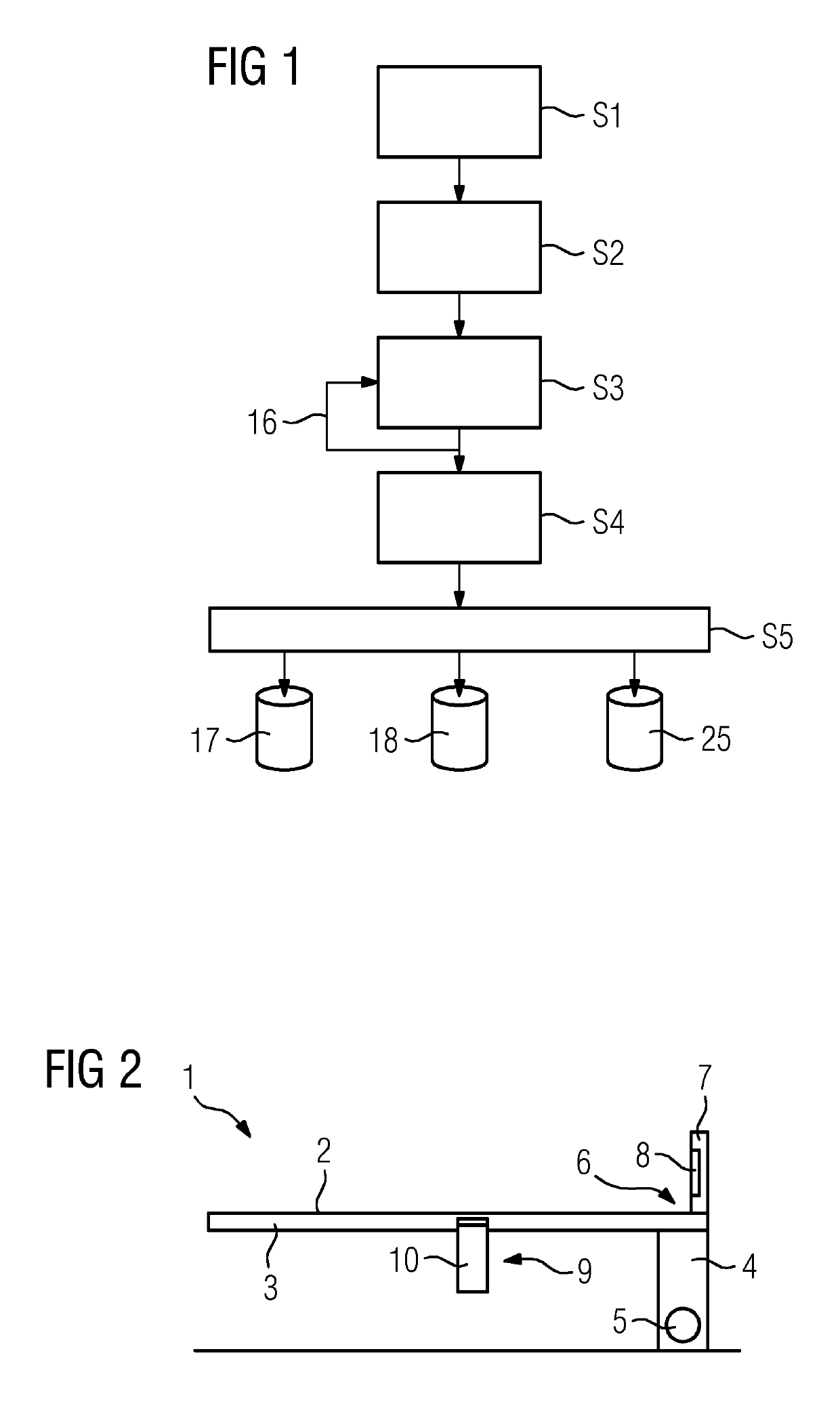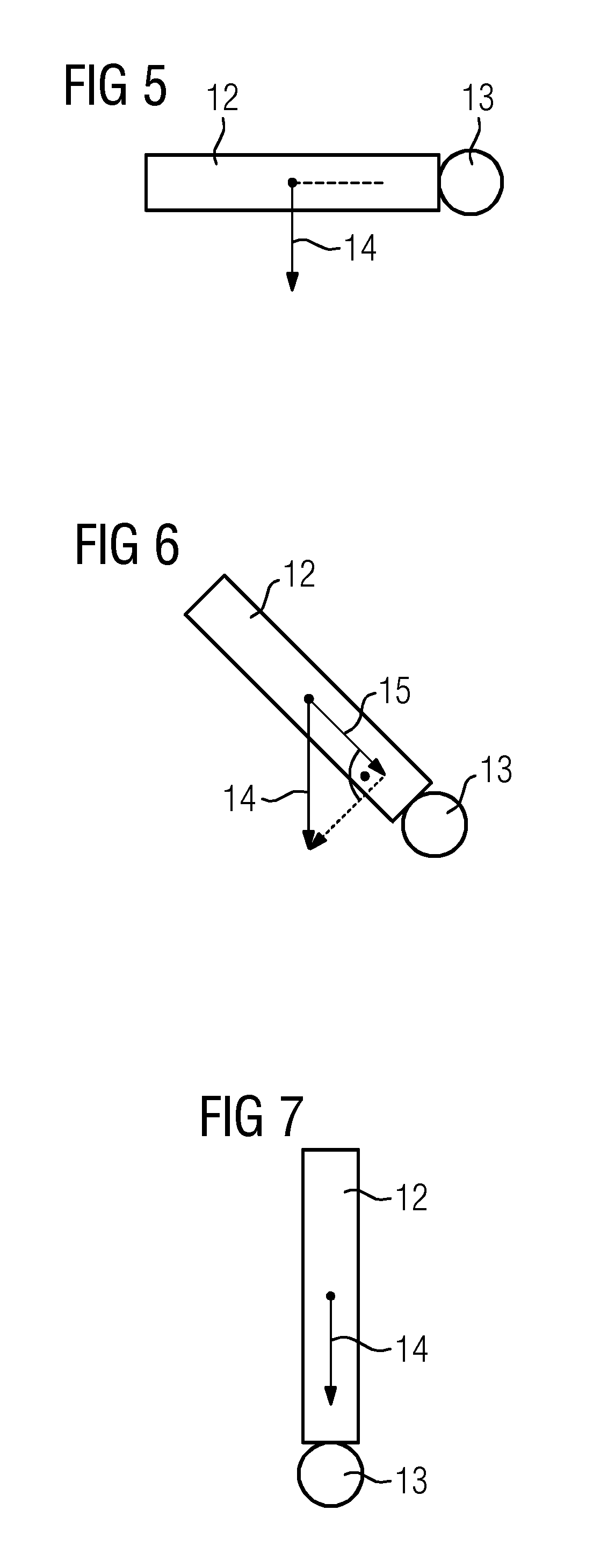Automatic determination of joint load information
a load information and automatic determination technology, applied in the field of automatic determination of joint load information, can solve the problems of difficult to establish correspondence between different loading states, three-dimensional images in loading states that lie between these extremes are not supported by imaging protocols, etc., and achieve the effect of more room
- Summary
- Abstract
- Description
- Claims
- Application Information
AI Technical Summary
Benefits of technology
Problems solved by technology
Method used
Image
Examples
Embodiment Construction
[0050]FIG. 1 depicts a flow diagram of an illustrative embodiment of the method for determination of joint load information. In an act S1, a patient to be examined is placed on a patient couch of an imaging apparatus, here an X-ray apparatus, which permits a wide variety of robot-based settings of the recording device.
[0051]A patient couch 1 that may be used here is explained in more detail with reference to FIGS. 2 to 4.
[0052]FIG. 2 depicts a schematic sketch of the patient couch 1. The patient couch 1 has a patient table 3 with a supporting surface 2 on which the patient to be examined may be placed. The patient table 3 is carried by a stand 4, wherein it is moreover tiltable about a rotation axis 5 close to the floor, here mounted on the floor. The rotation axis 5 is arranged at the foot-side end 6 of the supporting surface 2.
[0053]At the foot-side end of the supporting surface 2, the latter is moreover terminated by a foot plate 7, which extends perpendicularly with respect to t...
PUM
 Login to View More
Login to View More Abstract
Description
Claims
Application Information
 Login to View More
Login to View More - R&D
- Intellectual Property
- Life Sciences
- Materials
- Tech Scout
- Unparalleled Data Quality
- Higher Quality Content
- 60% Fewer Hallucinations
Browse by: Latest US Patents, China's latest patents, Technical Efficacy Thesaurus, Application Domain, Technology Topic, Popular Technical Reports.
© 2025 PatSnap. All rights reserved.Legal|Privacy policy|Modern Slavery Act Transparency Statement|Sitemap|About US| Contact US: help@patsnap.com



